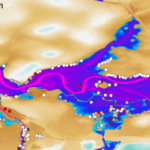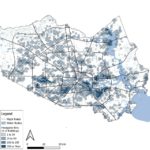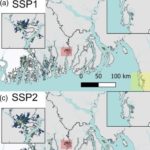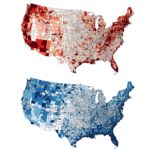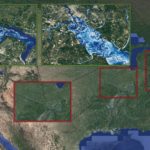Three of the five highest daily winter rainfall totals on record over Northern England have happened since 2015. This new research led by PhD student Daniel Cotterill and supervised by Fathom’s Paul Bates uses the UNSEEN climate modelling methodology to ask whether this is attributable to climate change.
Between 2013 and 2020 the UK saw a series of very wet winters, with heavy rainfall leading to £2.8bn ($2.5bn) of insurance losses from flooding. We know that extreme daily rainfall in the winter in the UK has been getting more intense in recent years, and mean precipitation was 19% higher on average in 2013–2020 compared to 1961–1990, according to a study by Kendon et al, 2021.
Rainfall in the UK, however, is extremely variable from year to year, making it difficult to attribute these events to a specific driver. Significant amounts of data – more than is available from observations alone – are needed to detect a strong climate signal over the noise from natural variability.
UNSEEN explained
UNSEEN stands for UNprecedented Simulated Extremes using ENsembles. It is a method of predicting events that are so rare that there is not enough observational data available. First presented in a Nature Communications paper led by Vikki Thompson in 2017, the approach simulates thousands of possible weather scenarios to create a collection of virtual observations, which researchers can use to study long-term trends for extreme weather events.
To address this challenge, researchers took an UNprecedented Simulated Extreme Ensemble (UNSEEN) approach (see box, above). This method uses large amounts of data to allow researchers to analyse the long-term trends of extreme weather events.
The research: Two methods of attribution
The research team applied the UNSEEN methodology to attribute five extreme winter rainfall events between 2015 and 2021. They used the DePreSys4 dataset, which contains 6,490 modelled winters between 1960 and 2029.
They also ran a classic, atmosphere-only climate model just for the year of the event, and compared the results of the two approaches. Finally, they looked for any changes in extremes for specific atmospheric circulation patterns.
They asked these questions:
- Did climate change make the five extreme rainfall events more likely, and does this differ between UK regions?
- Is there any relationship between the return period of the event and its increase in likelihood?
- Does this relationship differ between timescales and regions?
- Do the daily precipitation extremes change within certain circulation types?
The results: Extreme rainfall events becoming more likely
The key findings were:
- Using the UNSEEN method, there was a clear climate signal in the rainfall extremes just before the flooding. This was true of all five events, which were found to have become 1.4 to 2.6 times more likely since 1965 due to climate change.
- The second attribution method, which used a model with much less data, did not find any significant increases in likelihood. This underlines the need for large datasets when attributing extreme events.
- The researchers found that 1-in-10 to 1-in-90-year winter rainfall totals have changed significantly in Northern England.
- Daily rainfall extremes are likely to have increased across all the circulation patterns that are responsible for high rainfall in regions in England.


